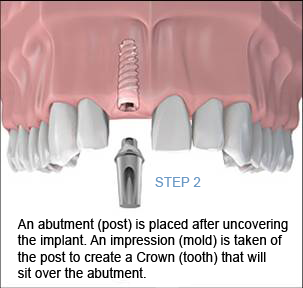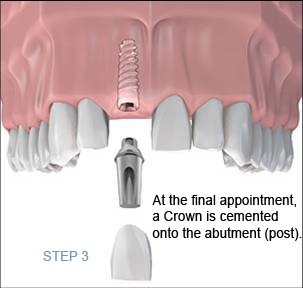Dental Implants
Dental Implant Procedure & What’s involved
Missing teeth or tooth: Why it’s a problem
- Because there’s nothing in your jaw bone stimulating the bone cells, your bone shrinks away (called resorption/atrophy). This ultimately leads to teeth shifting. Your jaw bone needs teeth to keep the bone levels intact. Consider this analogy: When a person is hospitalized for a long duration, the unused muscles atrophy or get smaller.
- When bone shrinks away at the site of the missing tooth / teeth, bone loss also occurs on the neighboring teeth. More chewing pressure is applied to these neighboring teeth than they can handle – which can lead to enamel chipping away at the gum lines of those teeth.
- When multiple teeth in an area are missing for a long term, can lead to facial drooping.
Look at the example of a patient below who has had missing teeth for a long time:
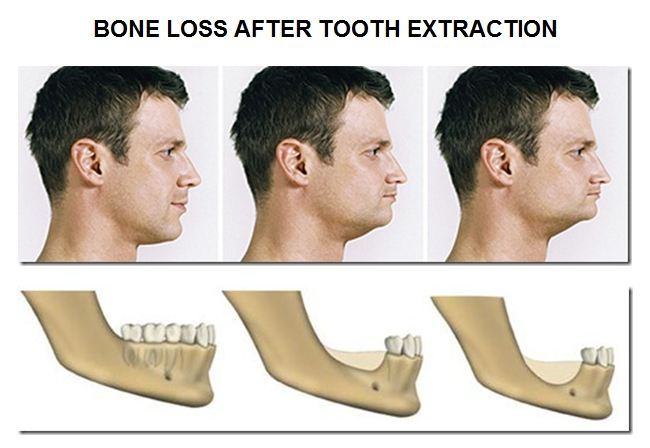
Bone Loss Around Teeth: What you can do to prevent shifting of teeth over time and future cycle of problems
The answer is Dental Implants.
Dental Implants – What are they?
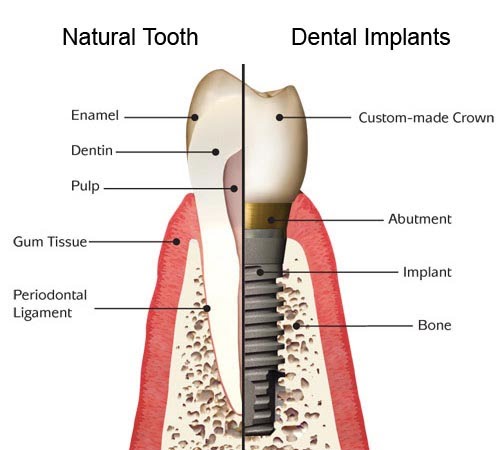
An implant is made of titanium that is used to replace the root of your tooth.
How does it prevent bone loss?
Through the natural process of osseointegration (fusing with your bone), the titanium of the implant becomes fused with the living bone cells in your jaw. This process maintains optimum bone levels and stops bone loss that inevitably follows tooth loss.
How do dental implants benefit you?
- Dental Implants are long lasting: Implants are the best long-term solution to missing teeth. But like anything else, they need to be properly cared for and they will last the rest of your life.
- Lifelike Appearance: Dental implants provide the same aesthetics and function as your real teeth. They provide benefits that other tooth replacement options (fixed bridge, a removable denture) can not match.
- Implants replace your Tooth Roots: By acting as roots of your own teeth, they become anchored to your own bone and stop the bone loss. They preserve bone structure for proper function and appearance.
Dental Implant Procedure – What’s Involved?
- Step 1 – Implant Placement: The dental implant placement procedure takes between 30-60 minutes. The anesthesia is no different than if you were to get a filling or a crown. The area where the implant is to be placed is anesthetized via local anesthesia. Next, Implant is placed into the jaw bone. Self dissolving sutures are placed over the area.
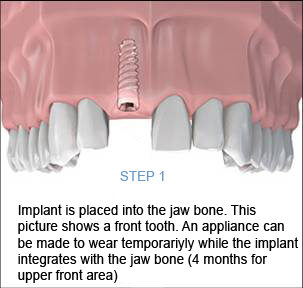
- Step 2 – Post (Abutment) placement: After the implant has properly osseointegrated (fused with the bone), the implant is exposed and a post is placed as you see in the picture below.
- The time between step 1 and step 2 (placement of post) varies depending on the area of the mouth. But it can range from three and a half to four months. In some cases where extensive grafting is required, a period of six months must be allowed for proper fusing of the implant within the jaw bone prior to taking an impression for creating the final implant crown/tooth.A final mold (impression) is taken of this area and sent to a Dental Lab to fabricate a Crown. While your crown is being fabricated in the lab, which takes up to two weeks, a temporary crown can be made for esthetics.
- Step 3 – Final Seating of the Implant Crown: This is the final step in getting your tooth over an implant. The final implant crown (tooth) is cemented over the post after checking for proper occlusion (bite) and your ability to floss.
If you are thinking about Dental Implants but not sure of your options, call us for a Complimentary Consultation!



